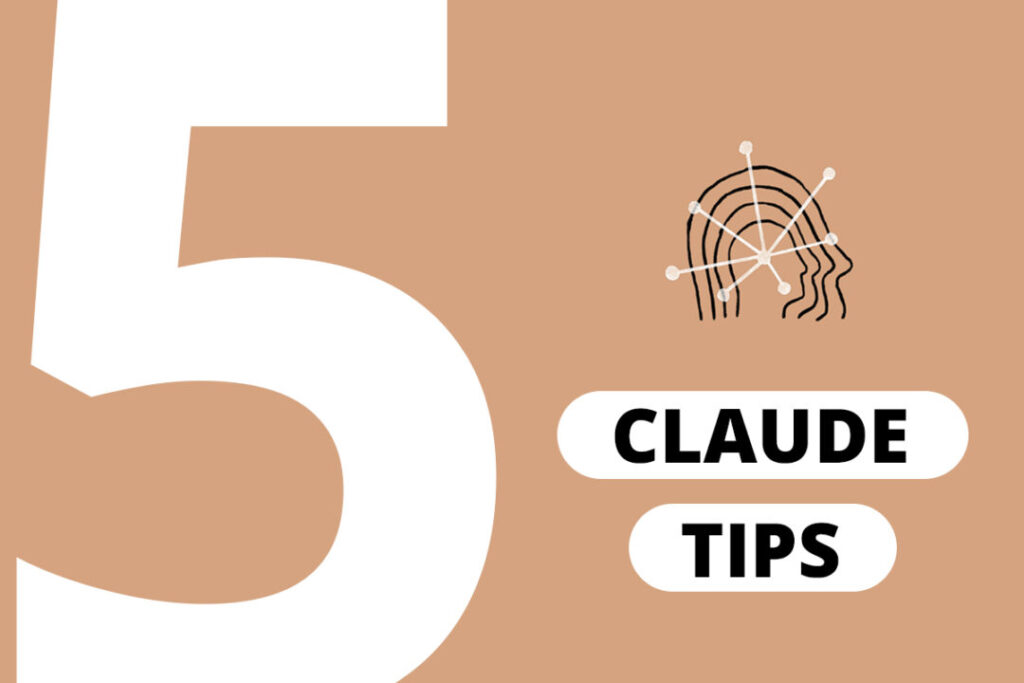Many people have started using Claude instead of ChatGPT.
Especially for content creation. You can see why… it’s just better:
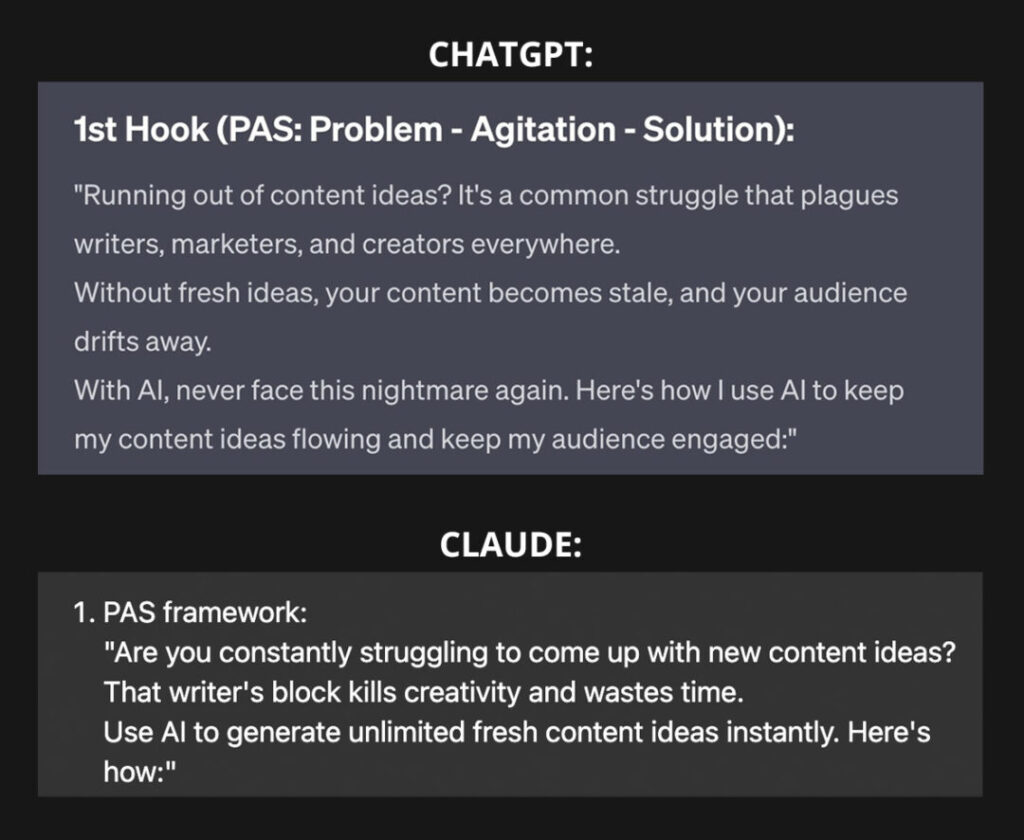
Claude is a completely different language model to ChatGPT. That means you’ll have to learn how to use Claude if you want to get the best results.
In this article, I’ll share 5 important prompt engineering tips that will help you take your results on Claude.ai to the next level.
What is Claude?
Claude is an AI chatbot (like ChatGPT) that was created by ex-OpenAI executives. Here are a few things you should know about it:
- It’s free
- It can accept multiple documents as prompts
- Claude 2 is available in beta in the U.S. and U.K. both on the web and via a paid API (in limited access)
- It has a superpower: Your prompts can be 70,000 words long (ChatGPT’s is around 500 words)
What is Prompt Engineering?
To maximize Claude’s potential, you have to ask it the right questions. Prompt Engineering is the art and science of prompting Claude in the most effective way to get the desired outcome.
An advanced Prompt Engineer knows how to create the perfect prompts to get the perfect answer.
Here are 5 tips and tricks you can use to instantly get better answers from Claude.
5 Prompt Engineering Tips for Claude.ai
1. Describe your task clearly
Claude responds best to clear, direct and specific instructions.
If you’re vague, you risk getting responses that are just as ambiguous. By being clear and specific, you’re making it easier for Claude to grasp exactly what you’re asking for.
For example, if you want Claude to remove personally identifiable information from some text, let it know exactly what personally identifiable information is. You could include the following in your prompt:
“PII includes names, phone numbers, home addresses and email addresses. Please replace all instances of PII with a singular 'XXX’.”
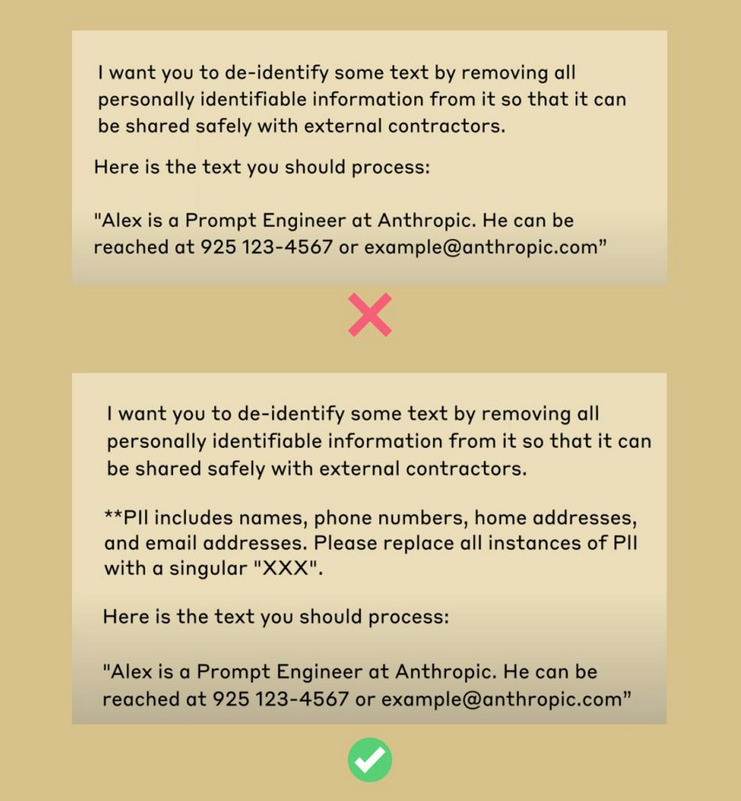
2. Use XML tags to mark different parts of your prompt
Claude has been fine-tuned to pay special attention to the structure of your prompts when they’re enclosed in XML tags (i.e. <these things>).
So if you want to include an article in your prompt, let Claude know it is an article by putting “<article>” before the article, and “</article>” at the end of the article.
If you want Claude to make amends to a specific passage of text, help Claude identify the text by putting “<text>” before the text, and “</text>” at the end of the text.
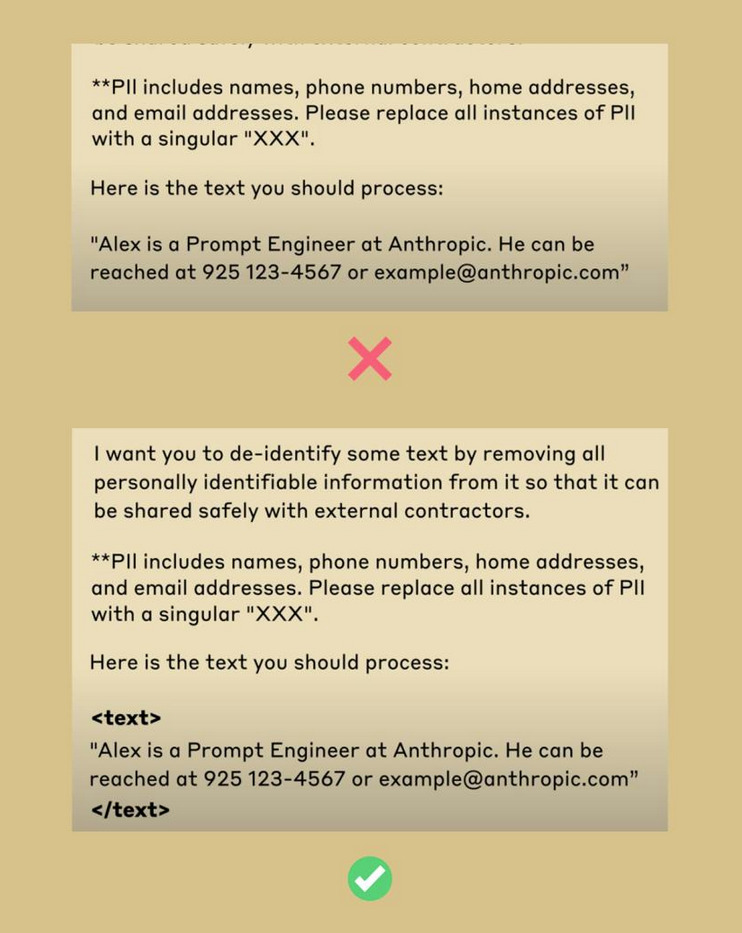
3. Give examples (the more, the better)
The more context you provide, the better Claude can understand what you’re asking. Including examples can bridge the gap between a good response and a great one.
Sounds obvious, but if you let Claude know exactly what you want the results to look like, there’s a much better chance that the results will meet your needs.
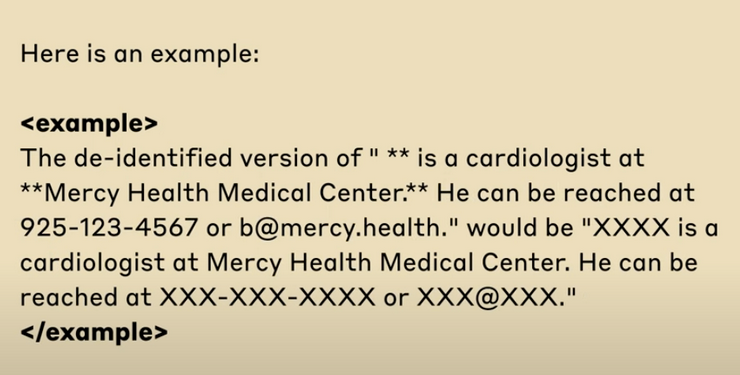
4. Make use of long context
Claude can read up to 100,000 tokens—that’s about 70,000 words! So don’t be afraid to provide detailed input, especially for more complex tasks.
Claude can read the entire length of ‘The Great Gatsby,’ so you’re not going to overwhelm it by providing a couple of paragraphs of context.
A great way to take advantage of this is to upload files and documents that will give Claude context to your request.
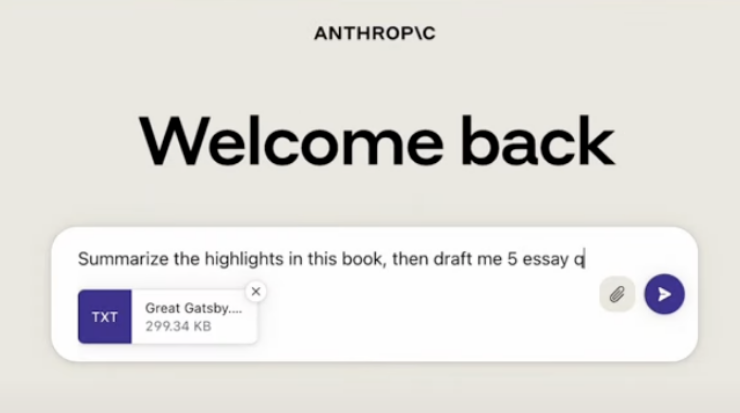
5. Allow Claude to think
Giving Claude time to think through its response has been proven to improve performance. This is particularly important for complicated tasks.
You can prompt Claude to think through its answer by specifically asking it to before giving the actual answer. You can ask Claude to use XML tags to separate its answer into a thinking section and an answer section.
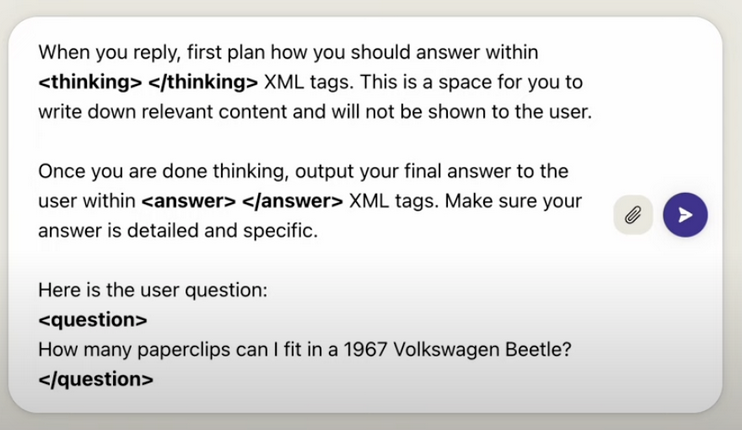
I want to learn more about AI tools!
To stay up to date with the latest AI tools, and how you can use them to become richer and more productive, make sure you subscribe to WGMI’s weekly newsletter.

